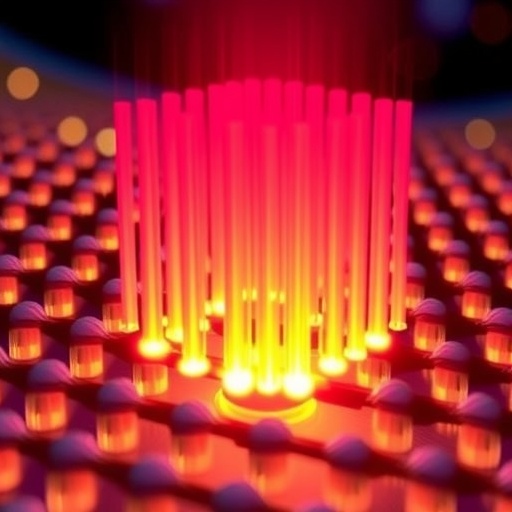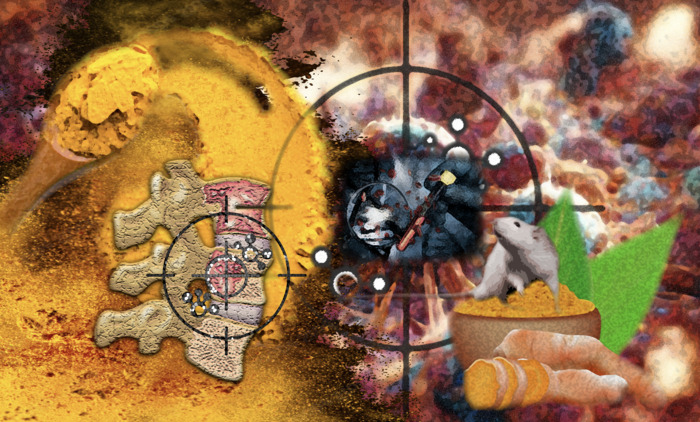A groundbreaking discovery in the realm of thermal physics has emerged from the laboratories of the University of Oldenburg, Germany, challenging our deepest understanding of heat transfer at nanometer scales. Researchers spearheaded by Prof. Dr. Achim Kittel and Dr. Svend-Age Biehs have revealed that when two objects are separated by mere nanometers—distances so infinitesimally small they defy everyday intuition—the amount of heat transferred between them defies classical theories by an extraordinary margin. Published in the esteemed journal Physical Review Letters, their findings assert that thermal radiation at these extreme proximities exceeds theoretical predictions by a factor nearing one hundred, exposing a glaring gap in established physics.
Historically, the principles governing thermal radiation are anchored in the pioneering work of Max Planck and Gustav Kirchhoff, whose laws delineate the limits of heat emission and absorption between bodies. Planck’s formulations have long served as a steadfast benchmark, defining the maximum conceivable energy radiated as heat from any object at a given temperature. For decades, these principles have been considered sacrosanct, mapping the frontier of radiative heat transfer. However, these laws hold firm primarily under conditions involving distances exceeding the micrometer scale. When examining interactions functioning within the near field—less than ten micrometers apart—the rigid boundaries of Planck’s law begin to blur. In this realm, the heat flux surges, sometimes by staggering multiples of a thousand, a phenomenon now well-understood both theoretically and experimentally.
Venturing beyond this known territory, the recent experiments at Oldenburg delve into an even more nuanced domain dubbed the “extreme near-field” regime, encompassing spatial gaps tighter than ten nanometers. The team’s intricate measurements, facilitated through a cutting-edge near-field scanning thermal microscope, have confirmed the radical hypothesis first observed in earlier 2017 trials. Whereas previous attempts left residual doubt about contaminants or experimental anomalies skewing the results, the enhanced precision and rigorous protocols applied in this latest research decisively verify the extraordinary heat transfer levels as genuine and reproducible phenomena.
To achieve this unprecedented measurement fidelity, the research team meticulously refurbished their experimental framework. Instead of the traditionally used sharp probe tips, they employed a gold-coated spherical probe to interact with a thin gold sample substrate. This adjustment, while sacrificing fine lateral resolution, significantly amplified the accuracy of distance control and heat flow measurement. Crucially, both the probe and sample underwent an exhaustive, multi-step cleaning regimen to eradicate any atomic-scale impurities that might undermine the validity of the data, effectively eliminating sources of extraneous noise or error.
This refined methodology allowed the team to map the fluid transition from typical near-field radiative behavior to the extreme near-field spectrum with unmatched granularity. The results indicate a phenomenally steep increase in radiative heat conductance once the gap narrows beneath the ten-nanometer threshold. Measured heat transfer soared roughly one hundred times greater than Planckian predictions, a pronounced departure from the scaling trends understood in less confined regimes. These findings punctuate a fundamental challenge to existing models of nanoscale heat exchange and call for a paradigm shift in our understanding of thermal dynamics at the smallest scales.
What remains enigmatic is the physical mechanism underpinning this excess heat transfer. Conventional quantum and electromagnetic theory posits that at such proximity, surface phonon polaritons and evanescent waves dominate energy exchange, yet these factors fall short of accounting for the observed intensities. The Oldenburg team acknowledges that current theoretical frameworks are ill-equipped to fully explain the extreme near-field effect, underscoring a pressing need for expanded models that incorporate hitherto overlooked interactions or material properties.
The implications of this discovery resonate profoundly across multiple frontiers of nanoscale science and technology. For instance, in nanoelectronics, managing heat dissipation with pinpoint precision is paramount; overheating remains a persistent barrier to device miniaturization and performance optimization. Understanding and harnessing this amplified heat conductivity at ultra-close distances could revolutionize thermal management techniques, enabling contactless cooling or heating of components at scales previously inconceivable.
Moreover, in nanooptics and photonics, where the interaction between light and matter occurs at near-atomic dimensions, controlling temperature without physical contact could protect fragile components, improve the stability of laser systems, and enhance the sensitivity of detection schemes. The ability to modulate thermal radiation across nanogaps opens avenues for novel sensor development and energy-efficient thermal devices.
These experimental insights were achieved with the contributions of dedicated undergraduate researcher Fridolin Geesmann, working under the supervision of Kittel and Biehs, with valuable assistance from Philipp Thurau and Sophie Rodehutskors. Their rigorous approach exemplifies the collaborative spirit crucial for pushing the boundaries of modern nanotechnology and thermal physics.
With these revelations, the scientific community stands at a crossroads. The dramatic upsurge in heat transfer within the extreme near-field demands more comprehensive theoretical analysis and further experimental validation across different materials and geometries. Such studies will not only elucidate the fundamental physics involved but are likely to catalyze innovative applications, from nanoscale thermal circuits to energy harvesting and beyond.
In conclusion, the University of Oldenburg’s pioneering work compels a profound reevaluation of classical thermal radiation laws under extreme confinement. The confirmed existence of this anomalously high nanoscale heat transfer phenomenon promises to unlock new dimensions in both our scientific understanding and technological capabilities. As Prof. Kittel aptly notes, embracing this enigma could redefine thermal science in the nanoregime and usher in an era of unprecedented control over heat flows where contact is not just unnecessary but undesirable.
Subject of Research: Transition from near-field to extreme near-field radiative heat transfer
Article Title: Transition from near-field to extreme near-field radiative heat transfer
News Publication Date: 15-Oct-2025
Web References: 10.1103/lcz1-f5v9
Image Credits: University of Oldenburg / Matthias Knust
Keywords
Extreme near-field heat transfer, nanoscale thermal radiation, radiative heat transfer, near-field scanning thermal microscope, Planck’s law, nanotechnology, nanoelectronics thermal management, thermal radiation anomalies, radiative heat conductance, nanometer scale physics, thermal microscope, gold-coated probe
Tags: advancements in thermal energy transferDr. Svend-Age Biehs findingsexceeding classical heat transfer predictionsgroundbreaking thermal physics researchlimitations of Planck’s lawsnanometer scale heat exchangenanotechnology heat transfernear field thermal interactionsPhysical Review Letters publicationProf. Dr. Achim Kittelthermal radiation at nanoscalesUniversity of Oldenburg discovery






